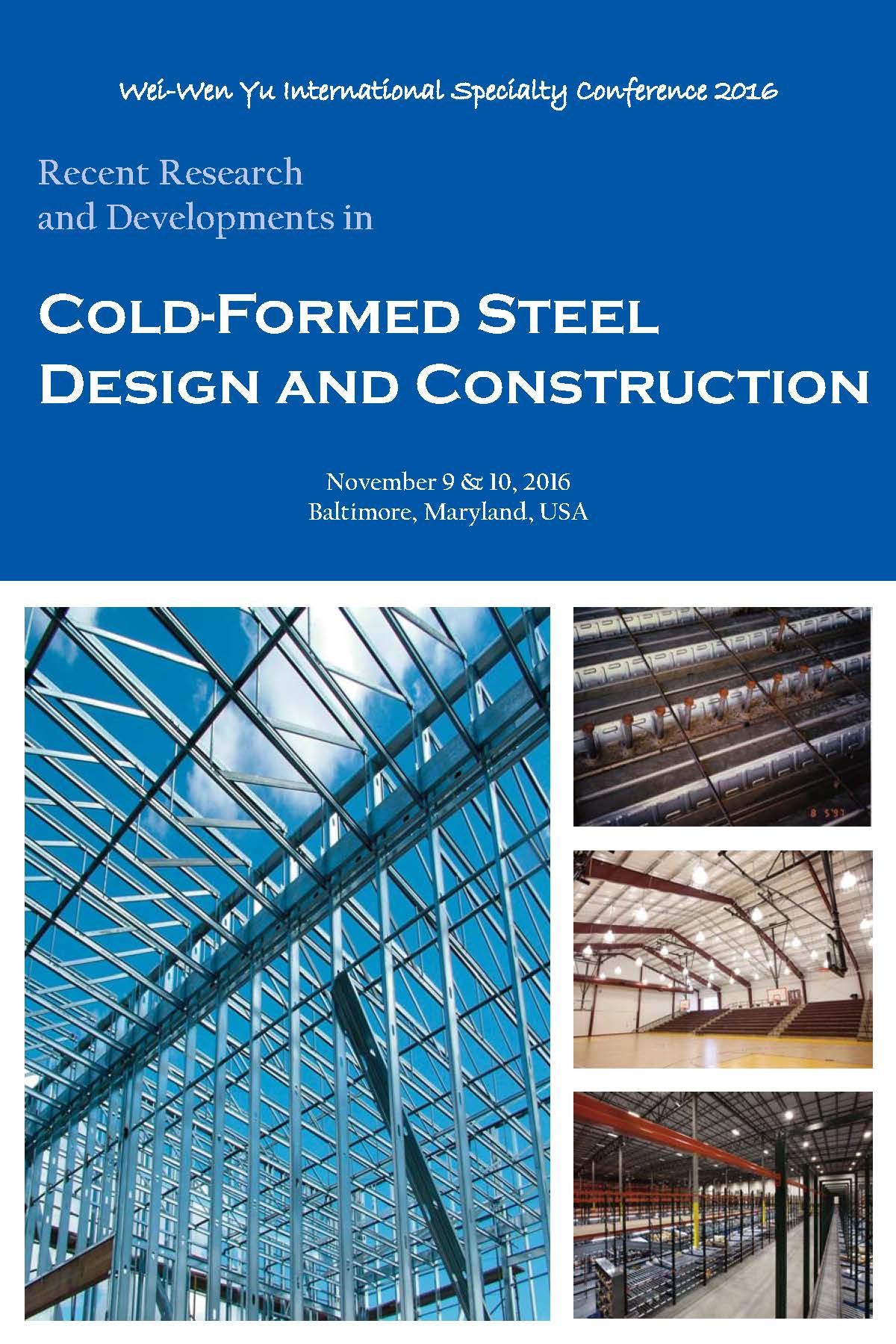Session Dates
09 Nov 2016
Abstract
When electrical cabinets are subjected to lateral loads, such as earthquakes, the beams of the cabinet frame typically experience double-curvature bending deformation. These beams are usually constructed from cold-formed plain channel sections so they are vulnerable to elastic local buckling near their ends, where high stresses from applied loads are more likely to develop. To capture local buckling behavior, structural engineers typically use high-fidelity finite element models, but this approach can be complex and computationally expensive. A Timoshenko beam element model is simpler and less computationally costly but it is not capable of capturing local buckling behavior. In this paper, a hybrid Timoshenko beam element model augmented with nonlinear nodal springs is proposed to capture elastic local buckling. Local buckling behavior is computed using cross sectional moment-curvature data generated by an effective-width equation, and the results of computations are validated using a high fidelity finite element model (referred to as the benchmark model) of the beam. The resulting reduced rotational stiffness is incorporated in nonlinear elastic rotational nodal springs introduced at the beam ends. A comparison of the hybrid and benchmark model results is presented to confirm the accuracy of the hybrid model.
Department(s)
Civil, Architectural and Environmental Engineering
Research Center/Lab(s)
Wei-Wen Yu Center for Cold-Formed Steel Structures
Meeting Name
International Specialty Conference on Cold-Formed Steel Structures 2016
Publisher
Missouri University of Science and Technology
Document Version
Final Version
Rights
© 2016 Missouri University of Science and Technology, All rights reserved.
Document Type
Article - Conference proceedings
File Type
text
Language
English
Recommended Citation
Lim, Edwin; Goodno, Barry J.; and Craig, James I., "Incorporation of Elastic Local Buckling in a Plain Channel Section Beam Subjected to Double-Curvature Bending: An Effective-Width Approach" (2016). CCFSS Proceedings of International Specialty Conference on Cold-Formed Steel Structures (1971 - 2018). 4.
https://scholarsmine.mst.edu/isccss/23iccfss/session3/4
Incorporation of Elastic Local Buckling in a Plain Channel Section Beam Subjected to Double-Curvature Bending: An Effective-Width Approach
When electrical cabinets are subjected to lateral loads, such as earthquakes, the beams of the cabinet frame typically experience double-curvature bending deformation. These beams are usually constructed from cold-formed plain channel sections so they are vulnerable to elastic local buckling near their ends, where high stresses from applied loads are more likely to develop. To capture local buckling behavior, structural engineers typically use high-fidelity finite element models, but this approach can be complex and computationally expensive. A Timoshenko beam element model is simpler and less computationally costly but it is not capable of capturing local buckling behavior. In this paper, a hybrid Timoshenko beam element model augmented with nonlinear nodal springs is proposed to capture elastic local buckling. Local buckling behavior is computed using cross sectional moment-curvature data generated by an effective-width equation, and the results of computations are validated using a high fidelity finite element model (referred to as the benchmark model) of the beam. The resulting reduced rotational stiffness is incorporated in nonlinear elastic rotational nodal springs introduced at the beam ends. A comparison of the hybrid and benchmark model results is presented to confirm the accuracy of the hybrid model.



